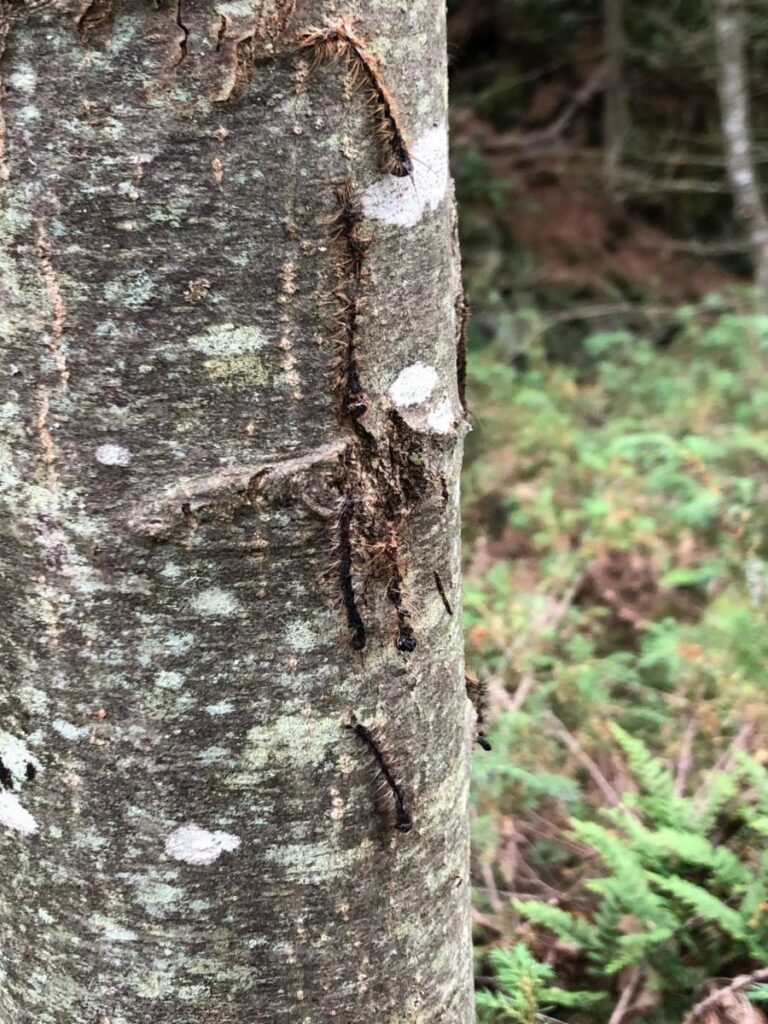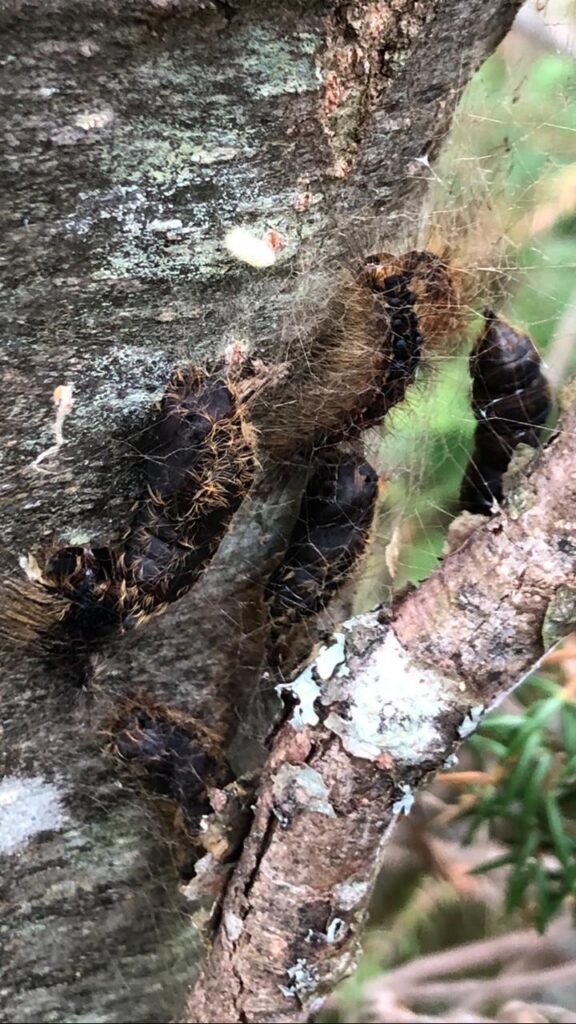We may have received some help from Mother Nature in our battle against the infestation of gypsy moths. The caterpillars were slowing down and looking like they were preparing to pupate just over a week ago. However, the apparent slowing down or lethargy was likely the first sign of a virus and a fungus that have killed many GM caterpillars.
The Virus
If you see V-shaped GM caterpillar carcasses on the trunks of your trees, they may have died from the “nuclear polyhedrosis virus” or NPV. It is a natural virus that remains dormant in the soil and is released onto mature caterpillars after heavy rains (which we had last week). The caterpillars carry the virus up to the leaves where it is eaten. Their digestive systems become disrupted after consumption as their stomachs release the virus. Outward signs include brown discolouration, regurgitation from stress, lethargy, and finally decomposition. As it decomposes, the virus is released into the air and infects other caterpillars. There is often a 100% mortality rate.

The Fungus
The caterpillar carcasses that are head-down on the tree trunks (there appear to be more of these than the V-shaped carcasses) have died off from “Entomaphaga maimaiga fungus”. It only attacks the caterpillars in their final stages when they are large and almost ready to form cocoons or pupae. The caterpillars die hanging head down (see the photo) and bodily fluids drip down out of them and down the tree trunk. The fungus spreads from these fluids and as the caterpillars decompose. As a bonus, this fungus can be carried to the cocoons, the adult moth stage, and to the egg sacks.
The heavy rain last week, obviously missed caterpillars that had already entered the pupae stage and thus we still have some pupae around our properties as well as moths flying into our pheromone traps. Hopefully, the fungus and virus killing the mature caterpillars, in addition to your efforts making pheromone traps to capture and kill the male moths, will have a large impact on the gypsy moth population next year.
